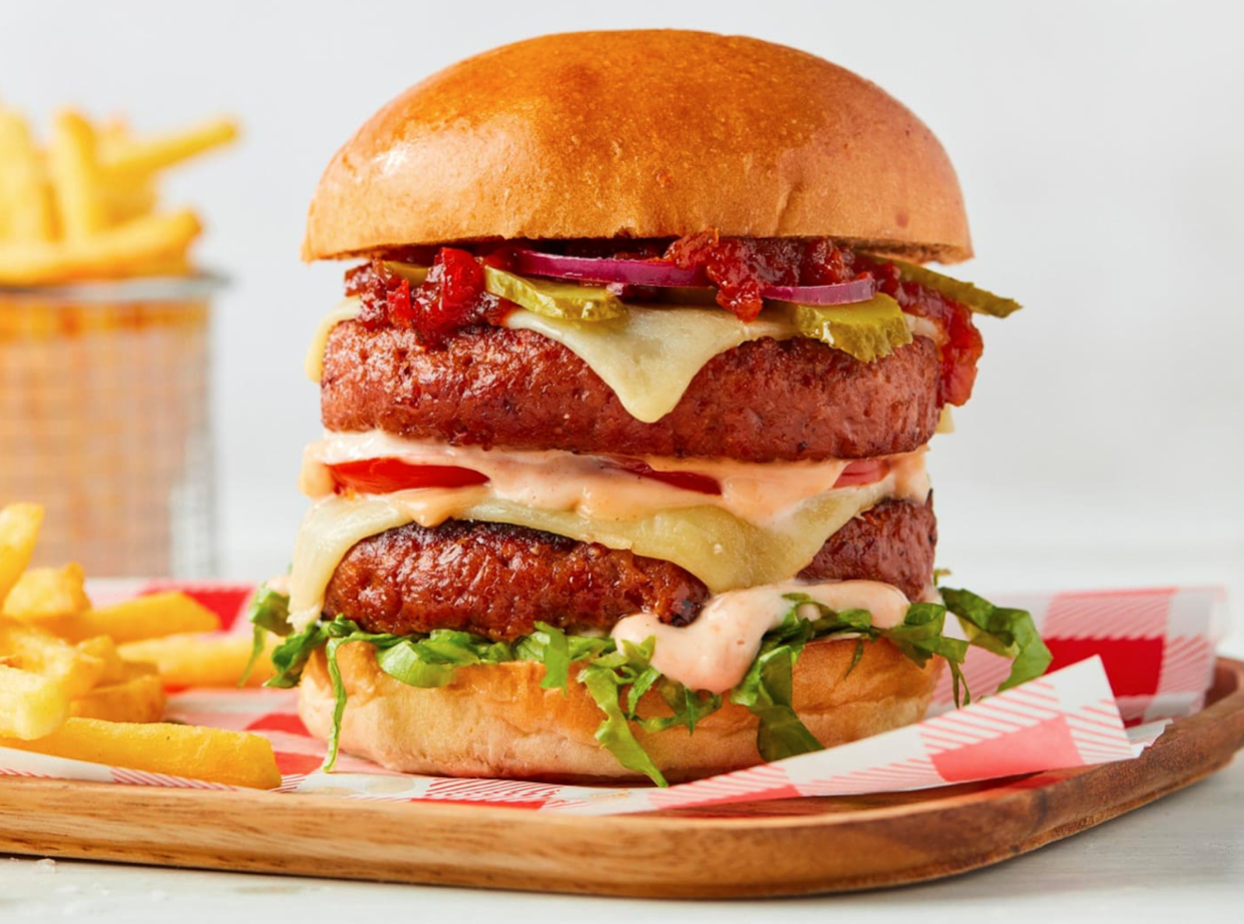Last week Barcelona-based startup NovaMeat made foodie headlines by releasing the latest iteration of its 3D-printed steak, a plant-based fillet that seeks to mimic an actual cut of meat. Notably, this time around it actually looks quite a lot like real steak — a vast improvement on the previous iteration, which looked closer to a chunky slice of brown ham with some flakes of salt on top.
NovaMeat is one of a bunch of startups that are in the process of designing 3D printers to make realistic steaks.
3D printers for food squeeze ingredients out of a tiny nozzle, layer by layer. When they’re used to make plant-based steaks, this means they can print cuts that not only taste like meat, but have the same texture too. (Or so the startups say.)
In doing so, these startups are chasing something that big plant-based meat companies like US-based Beyond Meat and Impossible Foods don’t have — the full steak experience, complete with textured layers of chewy fat, rather than just a burger patty.
3D-printing meat

While 3D printers have been around for a while now, it is only relatively recently that they started being used in a serious way to make plant-based meat.
Like any normal printer, 3D printers for meat simply follow digital instructions, meaning the startups need to create their own designs of meat steaks, choosing how much fat to include and how it should be distributed.
Giuseppe Scionti, the founder of two-year-old NovaMeat, says he discovered how to “bio-hack” the structure of meat while working as a researcher in the field of tissue engineering for a decade.
“When I was able to build a tissue that really resembled an actual tissue, I thought why can’t I use this tech and apply it to gastronomy to make a meat substitute,” he says.
NovaMeat first created a 3D-printed plant-based steak last year, but didn't initially focus on mimicking the appearance of a beef steak — choosing instead to focus first on texture. But for its newest iteration — dubbed "Steak 2.0" — the startup has upped its game on appearance. The startup previously said it plans to start selling the steaks in 2021.
Another startup serving up 3D-printed meat is one-year-old Israeli startup Redefine Meat. Unlike NovaMeat, Redefine Meat plans to sell 3D printers as well as the steaks themselves, so that businesses can print their own. On its list of potential buyers are butchers, supermarkets and other retailers.
It’s not all about looks
Redefine Meat is yet to make public a photo of the latest iteration of its steak, but the startup's cofounder Adam Lahav spoke to Sifted about the delicate balance between factors like speed, looks and texture.
“Because we are not obsessed about the shape [how it looks], we are able to move faster, be more productive and therefore be cheaper,” he said.
The size of the nozzle is also currently a secret, though Lahav says it is an important factor in achieving the right balance between speed and texture. Anything too small will take an enormous amount of time to print, while anything too big will lose the desired effect.
“We really understand how we feel and experience meat and we try to aim for that resolution. So if you cannot feel the difference in your mouth — you don't really need to go smaller than that,” he said. When they are finished the printers will be able to print 10kg of steak per hour.
The startup plans to begin selling its steaks on the market later this year and will start installing machines commercially next year. According to Lahav, the first machines will have a “closed system”, with a limited number of printing choices for different steak types — such as fillet and sirloin. But the number of steak cuts available will then be enlarged with time. “This is as easy as a software update,” he added. In time, the startup plans to move onto other types of meat like pork or lamb.
“Maybe in the future, butchers and retailers will be able to design their own products, but that's not something we're focusing on right now,” said Lahav.
The steaks of the future
Now more than ever, people are choosing to either cut out meat totally or reduce the amount of meat in their diets. In the UK a shift away from meat eating has already resulted in a drop in popularity for red meats, with last year seeing beef sales down by 4% and pork sales down by 6.4%.
Moving alongside this shift is an ever-growing excitement around plant-based meats. As it stands, burger companies like Impossible Foods and Beyond Meat are dominating the conversation, having both hit multibillion dollar valuations for their burgers that taste eerily like real meat.
But the promise of 3D-printed meat startups is that they can go one step further and make an actual cut of meat. If they can do this, theoretically they can snatch an even bigger slice of the meat industry than their burger-emulating counterparts.
Crucially, they are yet to be given the scrutiny of a public taste test — so for now all we can do is judge their progress based on official photos.



